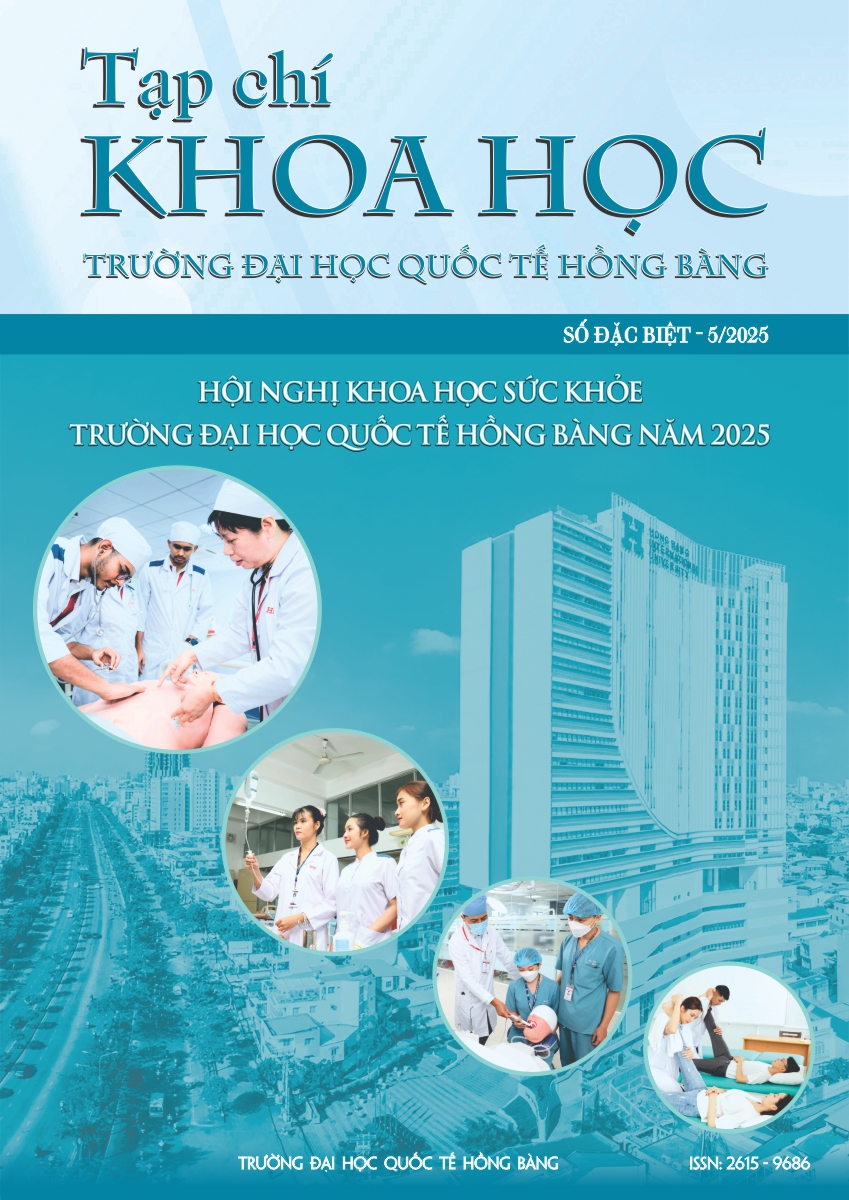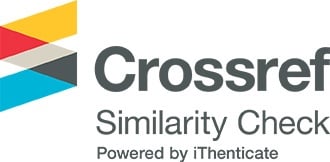TỐI ƯU HÓA PHẢN ỨNG REAL-TIME PCR PHÁT HIỆN ĐỘT BIẾN A2143G TRÊN GENE 23S rRNA LIÊN QUAN ĐẾN TÍNH KHÁNG CLARITHROMYCIN CỦA HELICOBACTER PYLORI
Các tác giả
DOI: https://doi.org/10.59294/HIUJS.KHSK.2025.012Từ khóa:
Helicobacter pylori, Clarithromycin, đề kháng kháng sinh, đột biến A2143G, allele-specific real-time PCRTóm tắt
Đặt vấn đề: Điều trị nhiễm khuẩn Helicobacter pylori (H. pylori) đang trở nên khó khăn hơn bởi tình trạng kháng Clarithromycin, gây ra bởi các đột biến điểm như A2143G trên gene 23S rRNA. Phương pháp giải trình tự đòi hỏi kỹ thuật cao, khó ứng dụng trong lâm sàng. Vì vậy, việc phát triển một phương pháp chẩn đoán nhanh, đặc hiệu và phù hợp với điều kiện thực tế là hết sức cấp thiết. Mục tiêu nghiên cứu: Tối ưu hóa phản ứng allele-specific real-time PCR (AS-qPCR) để phát hiện nhanh đột biến A2143G của H. pylori trực tiếp từ mẫu sinh thiết dạ dày - tá tràng. Vật liệu và phương pháp: Phản ứng AS-qPCR sử dụng mồi và mẫu dò Taqman để phân biệt ba kiểu gen: hoang dại, đột biến, và hỗn hợp. Các điều kiện phản ứng: Nhiệt độ lai, nồng độ mồi và nồng độ mẫu dò được tối ưu lần lượt. Kết quả: Phản ứng AS-qPCR được thiết lập có khả năng phát hiện đột biến A2143G, trả kết quả nhanh trong vòng 2 giờ. Phản ứng cho phép phát hiện cả những mẫu hỗn hợp có tần suất allele đột biến thấp tới 20%, cho thấy độ nhạy đáng tin cậy. Kết luận: Phản ứng AS-qPCR được thiết lập trong nghiên cứu là một công cụ sinh học phân tử nhanh, khả thi trong việc hỗ trợ lựa chọn kháng sinh Clarithromycin hợp lý, cá thể hóa điều trị.
Abstract
Introduction: The treatment of Helicobacter pylori (H. pylori) infection is increasingly hindered by Clarithromycin resistance, primarily due to point mutations, such as A2143G, in the 23S rRNA gene. While Sanger sequencing remains the gold standard for mutation detection, its technical complexity limits widespread clinical application. A rapid, specific, and practical diagnostic approach is urgently needed. Objective: To optimize an allele-specific real-time PCR (AS-qPCR) assay for the rapid detection of the A2143G mutation in H. pylori directly from gastric-duodenal biopsy specimens. Methods: The AS-qPCR assay was designed using allele-specific primers and TaqMan probes to differentiate wild-type, mutant, and heterozygous genotypes. Key parameters, including annealing temperature, primer concentration, and probe concentration, were systematically optimized. Results: The optimized AS-qPCR assay enabled specific detection of the A2143G mutation within 2 hours. The assay demonstrated high sensitivity, reliably detecting mutant alleles in mixed samples with a frequency as low as 20%. Conclusion: The developed AS-qPCR assay provides a rapid and sensitive molecular tool for identifying Clarithromycin-resistant H. pylori strains. Its clinical applicability may facilitate the timely selection of antibiotics and support personalized treatment strategies.
Tài liệu tham khảo
[1] K. Robinson, D. P. Letley, and K. Kaneko, “The Human Stomach in Health and Disease: Infection Strategies by Helicobacter pylori,” Springer Cham, 2017. doi: 10.1007/978-3-319-50520-6.
DOI: https://doi.org/10.1007/978-3-319-50520-6_1[2] M. Asaka, A. R. Sepulveda, T. Sugiyama, and D. Y. Graham, “Gastric Cancer,” Helicobacter pylori: Physiology and Genetics, 2001, Accessed: Mar. 27, 2025. [Online]. Available: https://www.ncbi.nlm.nih.gov/books/NBK2445/
[3] S. Z. Ding, Y. Q. Du, H. Lu, Z. S. Li, “Chinese Consensus Report on Family-Based Helicobacter pylori Infection Control and Management (2021 Edition),” Gut, vol. 71, no. 2, pp. 238-253, Feb. 2022, doi: 10.1136/gutjnl-2021-325630.
[4] D. V. Long, D. V. Hang, N. T. Hao, N. D. Thang, “Helicobacter pylori Infection and Eradication Outcomes among Vietnamese Patients in the same households: Findings from a Non-Randomized Study,” PLoS One, vol. 16, no. 11, p. e0260454, Nov. 2021, doi: 10.1371/JOURNAL.PONE.0260454.
DOI: https://doi.org/10.1371/journal.pone.0260454[5] W. D. Chey, C. W. Howden, S. F. Moss, S. C. Shah, “ACG Clinical Guideline: Treatment of Helicobacter pylori Infection,” American Journal of Gastroenterology, vol. 119, no. 9, pp. 1730-1753, Sep. 2024, doi: 10.14309/AJG.0000000000002968.
DOI: https://doi.org/10.14309/ajg.0000000000002968[6] P. Malfertheiner, F. Megraud, T. Rokkas, L. Zhou, “Management of Helicobacter pylori infection: the Maastricht VI/Florence consensus report,” Gut, vol. 71, no. 9, pp. 1724-1762, Sep. 2022, doi: 10.1136/gutjnl-2022-327745.
DOI: https://doi.org/10.1136/gutjnl-2022-327745[7] T. T. K. Tường, “Hiệu quả của liệu pháp kép liều cao trong tiệt trừ Helicobacter pylori trên bệnh nhân đã thất bại phác đồ 3 thuốc chuẩn,” Tạp chí Y học Tp. Hồ Chí Minh, vol. 23, no. 2, pp. 254-258, 2019.
[8] A. T. Marques, J. M. B. Vítor, A. Santos, M. Oleastro, and F. F. Vale, “Trends in Helicobacter pylori resistance to clarithromycin: From phenotypic to genomic approaches,” Microb Genom, vol. 6, no. 3, 2020, doi: 10.1099/mgen.0.000344.
DOI: https://doi.org/10.1099/mgen.0.000344[9] P. T. Nam, A. Santona, T. V. Huy, B. Paglietti, “High rate of levofloxacin resistance in a background of clarithromycin- and metronidazole-resistant Helicobacter pylori in Vietnam,” Int J Antimicrob Agents, vol. 45, no. 3, pp. 244-248, 2015, doi: 10.1016/j.ijantimicag.2014.10.019.
DOI: https://doi.org/10.1016/j.ijantimicag.2014.10.019[10] C. Quek, P. T. Son, Tran. T. Kieu, P. H. Van, “Antimicrobial susceptibility and clarithromycin resistance patterns of Helicobacter pylori clinical isolates in Vietnam,” F1000Res, vol. 5, 2016, doi: 10.12688/F1000RESEARCH.8239.1.
DOI: https://doi.org/10.12688/f1000research.8239.1[11] N. H. Thanh and T. T. K. Tường, “Đề kháng kháng sinh nguyên phát của vi khuẩn Helicobacter pylori ở bệnh nhân viêm loét dạ dày tá tràng,” Pham Ngoc Thach Journal of Medicine and Pharmacy, no. 2022-Volume 1.4, Dec. 2022, doi: 10.59715/pntjmp.1.4.16.
[12] H. T. M. Thi, T. V. Huy, N. V. Nhân, T. T. N. Hoa, “Xác định đột biến gene 23S rRNA của Helicobacter pylori và mối liên quan của các đột biến gene này với đề kháng clarithromycin ở bệnh nhân viêm dạ dày mạn,” Tạp chí Y Dược học - Trường Đại học Y Dược Huế, vol. 28+29, 2015, doi: 10.34071/jmp.2015.4+5.5.
[13] N. Maslah, E. Verger, M. H. Schlageter, B. Cassinat, “Next-generation sequencing for JAK2 mutation testing: advantages and pitfalls,” Ann Hematol, vol. 98, no. 1, pp. 111-118, Jan. 2019, doi: 10.1007/s00277-018-3499-y.
DOI: https://doi.org/10.1007/s00277-018-3499-y[14] J. H. Nahm, W. K. Kim, Y. Kwon, and H. Kim, “Detection of Helicobacter pylori with clarithromycin resistance-associated mutations using peptide nucleic acid probe-based melting point analysis,” Helicobacter, vol. 24, no. 5, Oct. 2019, doi: 10.1111/HEL.12634.
DOI: https://doi.org/10.1111/hel.12634[15] M. Oleastro, A. Ménard, A. Santos, F. Mégraud, “Real-time PCR assay for rapid and accurate detection of point mutations conferring resistance to clarithromycin in Helicobacter pylori,” J Clin Microbiol, vol. 41, no. 1, pp. 397-402, Jan. 2003, doi: 10.1128/JCM.41.1.397-402.2003.
DOI: https://doi.org/10.1128/JCM.41.1.397-402.2003[16] Y. Zhao, Y. Li, Z. Luan, C. Shi, “Establishment of a TaqMan-MGB probe multiplex real-time PCR system for one-step levofloxacin and clarithromycin resistant Helicobacter pylori detection,” J Microbiol Methods, vol. 192, p. 106393, Jan. 2022, doi: 10.1016/J.MIMET.2021.106393.
DOI: https://doi.org/10.1016/j.mimet.2021.106393[17] N. Gareayaghi and B. Kocazeybek, “Detection of A2143G, A2142C, and A2142G Point Mutations with Real-Time PCR in Stool Specimens from Children Infected with Helicobacter pylori,” Diagnostics, vol. 12, no. 9, p. 2119, Aug. 2022, doi: 10.3390/diagnostics12092119.
DOI: https://doi.org/10.3390/diagnostics12092119Tải xuống
Tải xuống: 85











